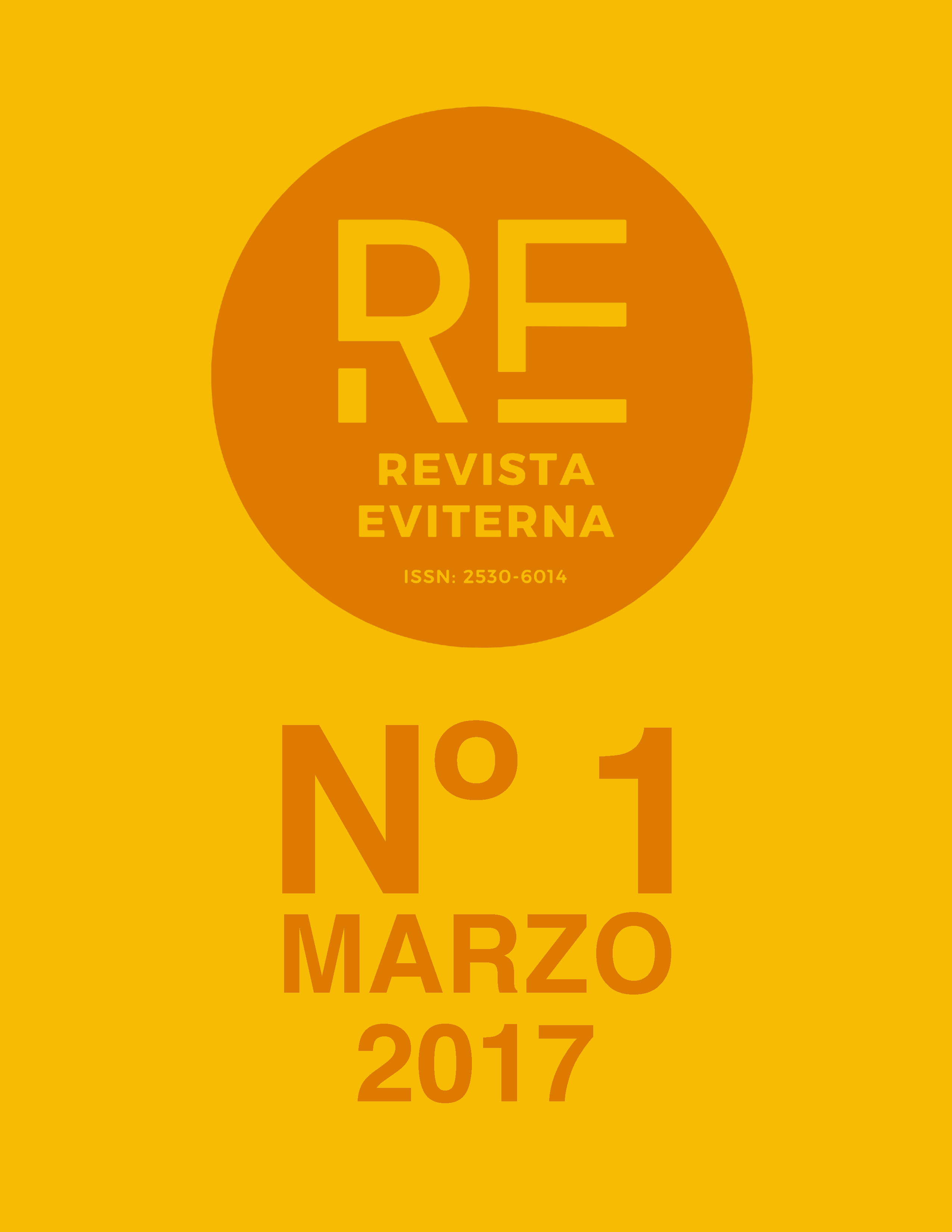Plumarian art in the 19th century: the National Emblem, a new iconographic motive for Republican Mexico
DOI:
https://doi.org/10.24310/Eviternare.v1i1.8000Keywords:
Ars plumaria; Feathers; XIX Century; Allegory; MexicoAbstract
The ars plumaria, artistic manifestation born in the prehispanic period, continues to astound because of the delicacy of feathers and the high degree of perfection achieved by amantecas. Feathers were considered in Mexico’s prehispanic past a precious material related to aesthetic and religious symbolism, closely linked to the spiritual and ritual life. The amantecayotl, the technique of making mosaics with feathers, reached its peak of perfection in the sixteenth century and continued to flourish after Tenochtitlan’s conquest and during the Spanish domination, although during the nineteenth century only survived in small nuclei of production. The purpose of this article is to draw attention to the survival of ars plumaria in the nineteenth century through a first rapprochement to the Emblema nacional exploring its material features and iconographic motif. Also, it is proposed the revaluation of ars plumaria objects produced during the nineteenth century, whose study is still pending in the History of Art in Mexico
Downloads
Metrics
References
ANÓNIMO (1843), El Museo mexicano, miscelánea pintoresca de amenidades curiosas e instructivas. Tomo Primero, Ignacio Cumplido, Calle de los Rebeldes, México.
ACEVEDO, Esther (2000), “Entre la tradición alegórica y la narrativa factual”, en Los pinceles de la historia: de la patria criolla a la Nación mexicana, Museo Nacional de Arte-BANAMEX Universidad Nacional Autónoma de México - Instituto de Investigaciones Estéticas (UNAM-IIE), México.
BÁEZ MACÍAS, Eduardo (2003), Guía del archivo de la antigua Academia de San Carlos, 1781- 1910. UNAM-IIE, México.
CASTELLÓ YTURBIDE, Teresa (1993), “La plumaria en la tradición indígena”, en Arte plumaria en México, Fomento Cultural BANAMEX, México.
CIANCAS, María Esther (2002), Miscelánea de artes aplicadas: siglos XVI al XX, colecciones del Museo Nacional de Historia Castillo de Chapultepec, Plaza y Valdés, México.
CLAVIJERO, Francisco Javier (1826), Historia antigua de México, Tomo I, R. Ackerman, Londres. FATÁS, Guillermo y BORRÁS, Gonzalo (2006), Diccionario de términos de arte y elementos de arqueología, heráldica y numismática. Alianza Editorial, Madrid.
FLORESCANO, Enrique, “En la época de la reforma”. http://www.jornada.unam.mx/2004/07/15/ima- epoca.html
FLORESCANO, Enrique (2006), Imágenes de la patria a través de los siglos, Santillana, México.
ESTRADA DE GERLERO, Elena Isabel (2011), “La plumaria, expresión artística por excelencia”, en Muros, sargas y papeles. Imagen de lo sagrado y lo profano en el arte novohispano del siglo XVI, UNAM-IIE, México.
MACÍAS FLORES, Samira y BLAS ROJAS, Claudia (2012), “Restauración de objetos con plumas en las colecciones del acervo etnográfico del Museo Nacional de Antropología”, en IX Foro académico de ciencia, creación y restauración de la Escuela de Conservación y Restauración de Occidente, Escuela de Conservación y Restauración de Occidente, Guadalajara.
MAGALONI-KERPEL, Diana (2006), “Real and Illusory Feathers: Pigments, Painting Techniques, and the Use of Color in Ancient Mesoamerica”, en Nuevo Mundo, Mundos Nuevos, enero.
MORENO GUZMÁN, María Olvido y KORN, Melanie Ruth (2014), “Investigación y conservación bajo presión.Técnicas para el estudio del Penacho del México Antiguo”, en Conservación de Arte Plumario, Publicaciones Digitales Escuela Nacional de Conservación y Museografía – Instituto Nacional de Antropología e Historia (ENCRYM-INAH), México.
MORENO GUZMÁN, María Olvido (1993), “Las aves y la conservación de la plumaria”, en Arte plumaria en México, Fomento Cultural BANAMEX, México.
NÚÑEZ VÁZQUEZ, Diana María Fernanda (2014), “Caracterización de la Prosthechea citrina”, en Conservación de Arte Plumario, Publicaciones Digitales ENCRYM-INAH, México.
RAMÓN I NAVARRO, Arthur (2011), “Trofeo militar romano (h. 1770). Luis Paret y Alcázar (1746-1799)”, en Museo Nacional del Prado, Memoria de Actividades 2010, Ministerio de Cultura, Madrid.
RIPA, Cesare (2007), Iconología, Ediciones Akal, Madrid.
RODRÍGUEZ, C. Emblema Nacional. http://www.mna.inah.gob.mx/coleccion/pieza-2503/ficha-basica.html
RODRÍGUEZ DE SAN MIGUEL, Juan Nepomuceno (1839), Pandectas hispano-megicana, tomo I. oficina de Mariano Galván Rivera, México.
ROMÁN TORRES, Rosa Lorena (2006), “Noticias sobre la conservación del mosaico de plumas Cristo Salvador del mundo del Museo Nacional del Virreinato, México”, en Nuevo Mundo Mundos Nuevos, febrero.
ROQUE, Georges (1994), “Imágenes e identidades: Europa y América”, en XVII Coloquio Internacional de Historia del Arte. Arte, historia e identidad en América: visiones comparativas. UNAM-IIE, México.
SAHAGÚN, Bernardino de (1829), Historia General de las cosas de Nueva Espela, tomo II, Imprenta Alejandro Valdés, México.
SEBASTIÁN, Santiago (1994), "Los libros de emblemas: uso y difusión en Iberoamérica”, en Juegos de ingenio y agudeza: La pintura emblemática de la Nueva España, Museo Nacional de Arte, México.
SERENO AYALA, Yolanda (2013), La magia de las plumas. La voz de Michoacán, Michoacán. VALADEZ AZÚA, Raúl (2004), “Retomando la apicultura del México antiguo”, en Imagen veterinaria, vol. 4, n.o. 2, abril-junio, UNAM, México.
Downloads
Published
How to Cite
Issue
Section
License
All the contents published in Revista Eviterna are subject to the Creative Commons Reconocimento-NoComercia-Compartirigual 4.0 license, the full text of which can be found at <http://creativecommons.org/licenses/by-nc-sa/4.0>
They may be copied, used, disseminated, transmitted and publicly exposed, provided that:
The authorship and original source of your publication (Journal, editorial and URL of the work) are cited.
They are not used for commercial purposes.
The existence and specifications of this use license are mentioned.

Copyright is of two kinds: moral rights and patrimonial rights. Moral rights are perpetual, inalienable, inalienable, inalienable, inalienable and imprescriptible prerogatives.
In accordance with copyright legislation, Revista Eviterna recognizes and respects the moral rights of the authors, as well as the ownership of the economic right, which will be transferred to the University of Malaga for dissemination in open access.
The economic rights refer to the benefits obtained by the use or disclosure of the works. Revista Eviterna is published in open access and is exclusively authorized to carry out or authorize by any means the use, distribution, disclosure, reproduction, adaptation, translation or transformation of the work.
It is the responsibility of the authors to obtain the necessary permissions of the images that are subject to copyright.






12.png)
